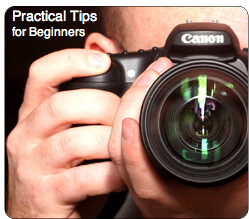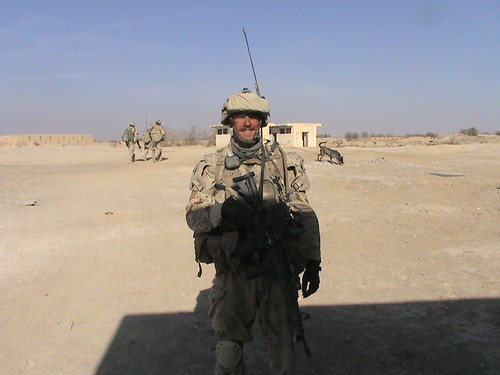Andy Nuttal stopping for a quick break in the shade on patrol. (His bomb dog in the background)
Soldier Killed Andy Nuttal Video http://ow.ly/QsyD formerly from #YZF #NWT killed after stepping on a land mine in #Afghanistan
Canadian soldier killed by roadside bomb in Afghanistan - The Globe and Mail http://ow.ly/Qsu8 formerly from #YZF
Victoria BC family Nuttall 'reeling’ after soldier’s death in Afghanistan http://ow.ly/PUiv Ex-Yellowknifer where he joined Air Cadets #yzf
Soldiers carry the casket of Lieut. Andrew Richard Nuttall (inset) who died during a foot patrol, Dec. 23, 2009, in the Panjwaii district of Afghanistan. Photograph by: Michelle Lang/Canwest News Service,
The body of Victoria soldier Lieut. Andrew Richard Nuttall, Canada's latest casualty in Afghanistan, will be repatriated during a ceremony at Canadian Forces Base Trenton on Monday Dec 28th, 2009.
To call your attention to interesting photography related on the web... and to show off some of my photographic work... is there another reason for a blog?
Monday, December 28, 2009
RIP Andy Nuttal ex-Yellowknifer where he joined Air Cadets
Thursday, December 24, 2009
Cold Weather Photography [excerpt]
Cold Weather Photography
[excerpted from http://www.alaskaphotographics.com/cold_weather_photography.shtml ]
Pink sunset backlights blowing snow on the tundra. © Patrick J. Endres
There is a rare beauty in Alaska's winter, both in the quality of light and color, and its silence and simplicity. But it can be extreme in cold temperatures, particularly in the interior and arctic regions. To experience and document this season, you need to reconcile your working photography system with cold weather. One needs a method that keeps them warm enough to function, as well as enjoy the experience. While I like being in the cold, I do not like being cold. There is a big difference here. Like most things in life, we feel most comfortable and confident once we have personally tested ourselves in a given situation or set of conditions. This applies for working in the cold as well.
How to photograph the aurora borealis (Northern Lights) with a digital camera [excerpt]
How to photograph the aurora borealis (Northern Lights) with a digital camera
By Photographer Patrick J. Endres
Please give attribution when referencing this article. Updated 12/11/2009
[excerpted from http://www.alaskaphotographics.com/how_to_photograph_northern_lights.shtml ]

Introduction

Common green color caused by oxygen gasses. Brooks mountain range, Alaska. © Patrick J. Endres
For many, just to view the aurora borealis (or northern lights) is an exciting thought. And to capture them with a camera is both thrilling and awe inspiring.
Before the advent of the digital camera, photographing the aurora with slide film was complicated and often involved a good deal of experimenting. With today's average digital SLR and a good lens, you are very likely to get some very satisfactory images.
This article is intended to give you some necessary information to maximize your aurora photography. While much of what is written below is general in nature and applies to most all digital cameras, the many, many brands and models have their own uniqueness. I will focus on Canon digital SLR's, since that is what i shoot. It is divided into four basic sections with a few miscellaneous details:
- WHERE AND WHEN TO VIEW THE AURORA
- HOW TO DRESS - WHAT TO WEAR
- CAMERA AND OTHER GEAR
- EXPOSURE - HISTOGRAMS - FILE TYPE
To learn more about the science of the aurora borealis visit wikipedia. A book by Dr. Syun-Ichi Akasofu in collaboration with Jack Finch and Jan Curtis, The Northern Lights Secrets of the Aurora Borealis, is an excellent resource. So is Northern Lights: The Science, Myth, and Wonder of Aurora Borealis with excellent photographs by my friend, colleague and maniacal aurora photographer Calvin Hall.
Saturday, December 19, 2009
Basic Photography Tips
How to Photograph….
- Wedding Photography Tips
- How to Photograph Fireworks
- How to Take Great Group Photos
- How to Photograph Waterfalls
- How to take a Photograph out of a Plane Window
- Backyard Bird Photography Tips
- Christmas Photography Tips
- Candlelight Photography Tips
- How to Photograph Mushroom, Toadstools and Fungi
- Airshow Photography Tips
- Urban Landscape Photography Tips
- How to Photograph a Spider's Web
- Food Photography – An Introduction
- Beach Photography Tips
- How to Photograph Silhouettes
- 11 Surefire Landscape Photography Tips
- Tips for Better Candid Photography
- How to Photograph Pets
- Tips for Photographing Stunning Sunsets
- Halloween Photography Tips
- Zoo Photography
- How to Photograph in Direct Sunlight
- How to Photograph Rainbows
Read more: http://digital-photography-school.com/how-to-photograph#ixzz0aA630CHs
Composition Tips
- The Rule of Thirds
- Working the Lines in Your Photography (how to use horizontal, vertical and diagonal lines)
- Finding Fresh Angles to Shoot From
- Photographing Children – Composition
- Getting Horizons Horizontal
- Getting Images Straight
- Fill Your Frame
- The Importance of Focal Points
- Creating Active Space – Photographing Moving Subjects
- Getting Backgrounds Right
- Framing Your Shots
- How to Use Converging Lines to Enhance Your Photography
- 4 Rules of Composition for Landscape Photography
- How to Break the 'Rules' of Photography
Read more: http://digital-photography-school.com/digital-photography-composition-tips#ixzz0aA6ERnDM
Before you check out the links below – do check out our Essential Guide to Portrait Photography Ebook which was written with the Beginner Photographer in mind.
Below is just a selection of some of our digital photography tips and tutorials aimed more at the beginner photographer. We're always writing more beginner tips – so subscribe to DPS today to get all of our updates.
The Basics of Exposure
- Learning about Exposure – The Exposure Triangle
- Introduction to ISO in Digital Photography
- Introduction to Shutter Speed in Digital Photography
- Introduction to Aperture in Digital Photography
- Understanding Exposure – Book Review
Learning to Use Digital Camera Settings and Features
- How to Control Aperture and Shutter Speed on an Entry Level Point and Shoot Digital Camera
- Aperture and Shutter Priority Modes
- Introduction to White Balance
- Introduction to Digital Camera Modes
- Understanding Histograms
- Prefocus to Combat Shutter Lag
- Introduction to EXIF Data
- Automatic Exposure Bracketing (AEB)
Handling and Caring for a Digital Camera
- How to Hold a Digital Camera
- Shutter Release Technique
- How to Avoid a Dirty DSLR Image Sensor
- How to Clean a DSLR Lens
- 7 Digital Camera Predators and How to Keep them at Bay
Other Beginner Photography Tutorials and Tips

- 100 Things I've Learned About Photography
- 10 Questions to Ask When Taking a Digital Photo
- 11 Tips for Beginner Photographers
- Using Fill Flash
- How to Get Better Photos in Low Light Without Using a Flash
- How to Take Sharp Digital Images
- How to Use Focal Lock
- Shooting with an In Camera Flash
- 13 Lessons to Teach Your Child about Photography
Common Digital Photography Problems and Questions Answered
- 7 Strategies for Avoiding Flash Blow Out
- Macro Photography Tips for Point and Shoot Compact Digital Cameras
- How to Get Shallow Depth of Field in Your Digital Photos
- Crop Factor Explained
- Complete Digital Photography – Book Review
- The Digital Photography Book – Book Review
Read more: http://digital-photography-school.com/digital-photography-tips-for-beginners#ixzz0aAEpMlbD
Thursday, December 17, 2009
YouTube sci-fi video leads to $30m Hollywood contract
Tuesday, December 15, 2009
George Lessard's Accepted Globe & Mail Reader Photo Submissions on Flickr
Accepted Globe and Mail Reader Submissions
http://www.flickr.com/groups/globesubmissions/pool/44124372652@N01/

NEW From The MediaMentor ![]()

NEW From The MediaMentor ![]()

NEW From The MediaMentor ![]()

NEW From The MediaMentor ![]()

NEW From The MediaMentor ![]()

From The MediaMentor ![]()

From The MediaMentor ![]()

From The MediaMentor ![]()

From The MediaMentor ![]()

From The MediaMentor ![]()

From The MediaMentor ![]()

From The MediaMentor ![]()

From The MediaMentor ![]()

From The MediaMentor ![]()
![]()
From The MediaMentor ![]()

From The MediaMentor ![]()

From The MediaMentor ![]()

From The MediaMentor ![]()

From The MediaMentor ![]()

From The MediaMentor ![]()

From The MediaMentor ![]()

From The MediaMentor ![]()

From The MediaMentor ![]()

From The MediaMentor ![]()

From The MediaMentor ![]()

From The MediaMentor ![]()

From The MediaMentor ![]()

From The MediaMentor ![]()

From The MediaMentor ![]()

From The MediaMentor ![]()
